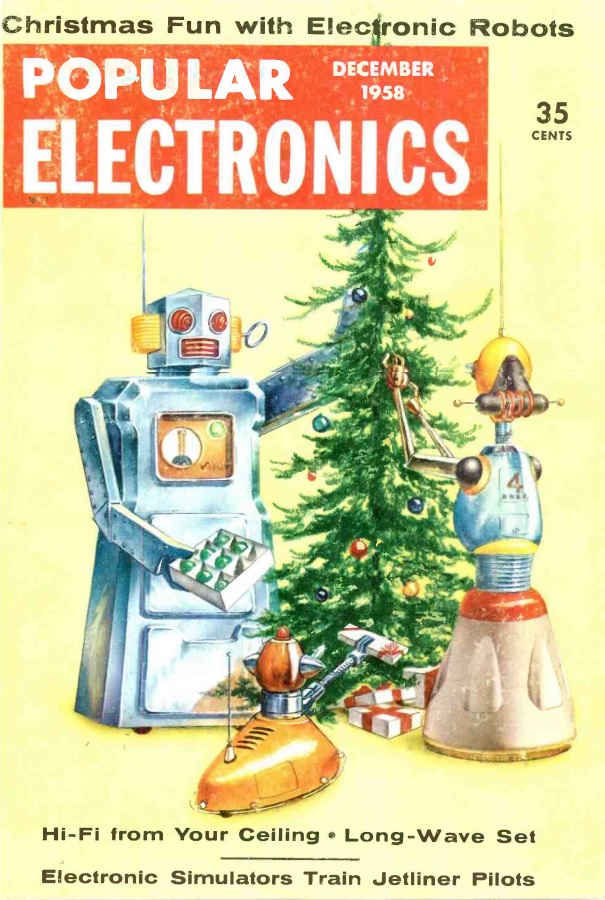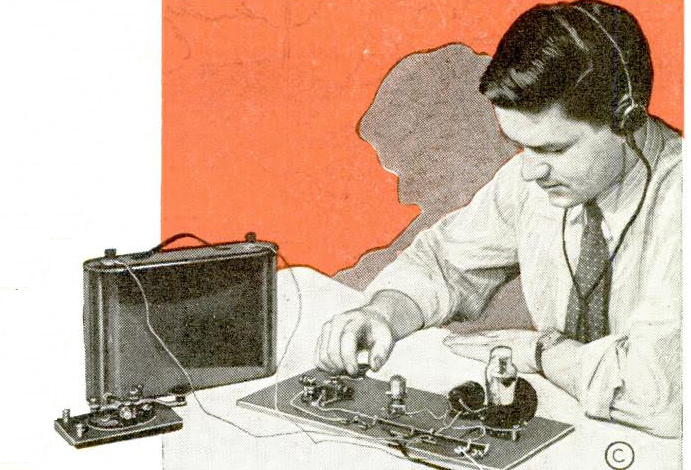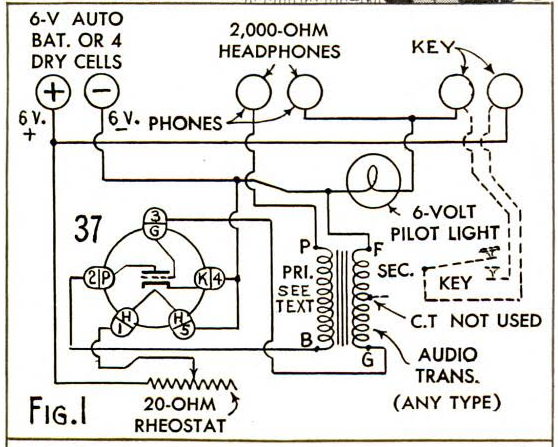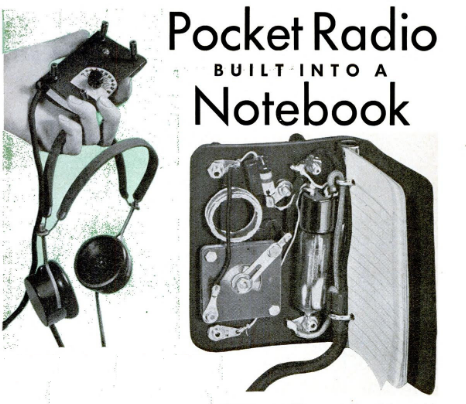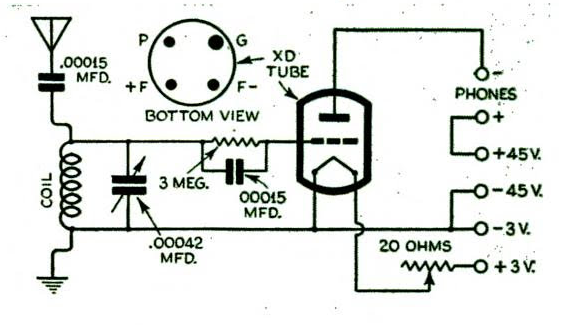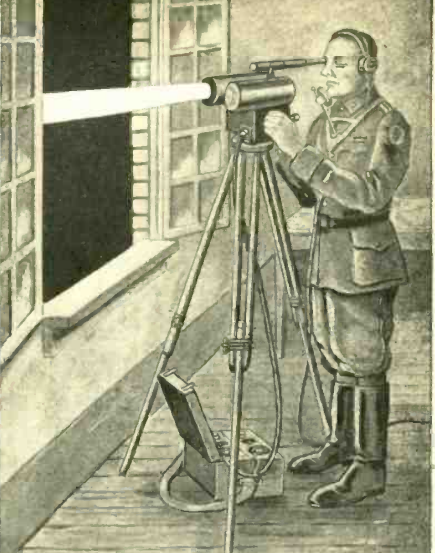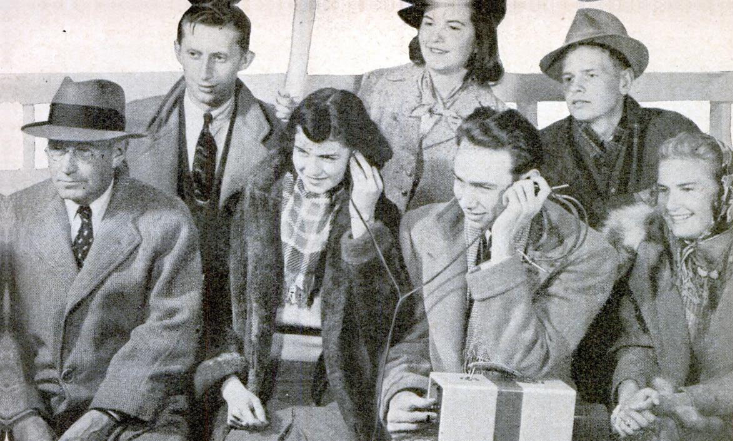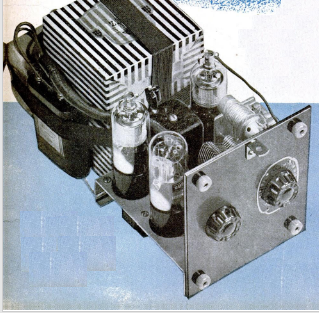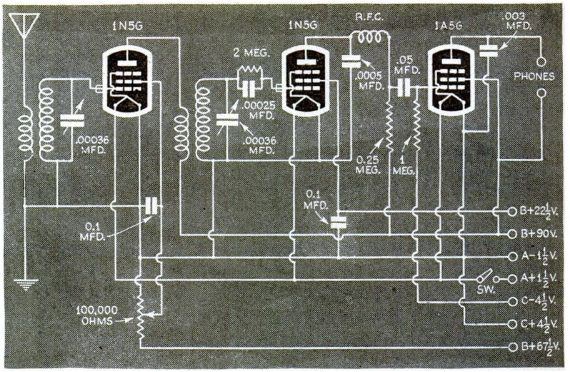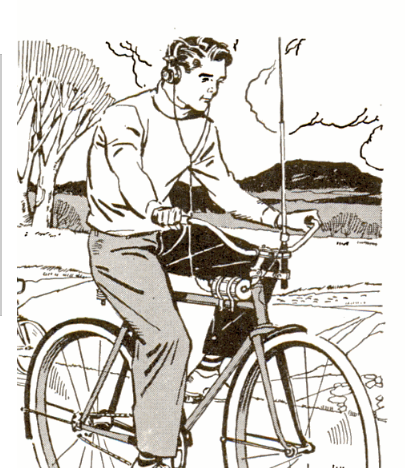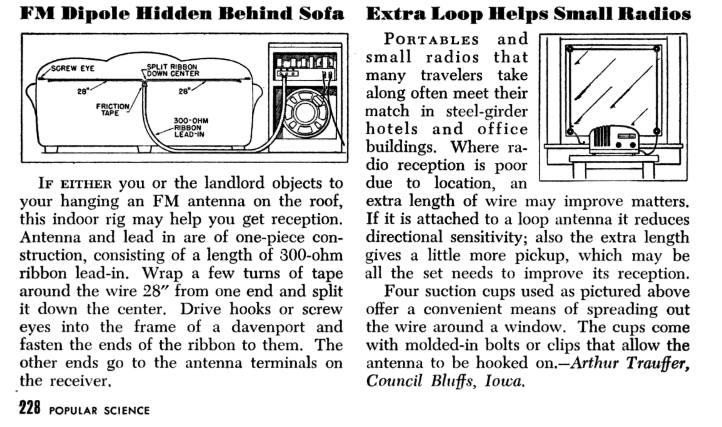 Seventy years ago this month, the December 1948 issue of Popular Science offered these antenna suggestions. For tough reception areas such as office buildings and hotels, the tried-and-true loop antenna in the window could pull in the stations on the standard broadcast band. Four suction cups made for a neat installation,
Seventy years ago this month, the December 1948 issue of Popular Science offered these antenna suggestions. For tough reception areas such as office buildings and hotels, the tried-and-true loop antenna in the window could pull in the stations on the standard broadcast band. Four suction cups made for a neat installation,
And for that newfangled FM set, a dipole discretely tacked behind the sofa would probably pull in the local static-free station.

